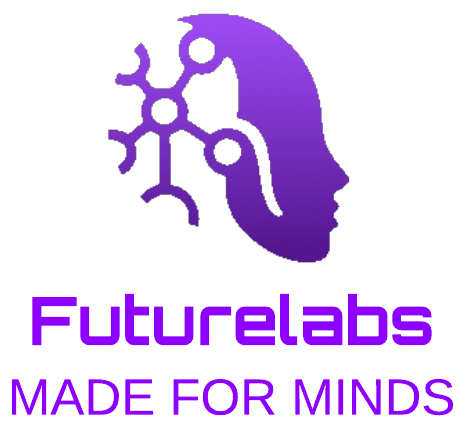Report by Maximiliano Fernández
Michal Kosinski, a renowned Stanford researcher, has confirmed that artificial intelligence (AI) captures a social component once thought to be exclusive to humans. In an interview with Infobae, he explained the implications and risks of his discovery, which does not align with the views of other experts.
The theory of mind dates back to 1978. Psychologists David Premack and Guy Woodruff developed the theory, defining it as the human ability to understand others’ thoughts, beliefs, and intentions, and attempted to test it in chimpanzees with little success. Nearly half a century later, the theory has returned to the center of discussion due to advancements in artificial intelligence.
Kosinski, a recognized psychologist at Stanford University, focused his career on the study of new technologies. He claims that advanced AI language models like GPT-4 could be showing a rudimentary version of the theory of mind, representing a huge breakthrough for its potential—and its risks. Machines now interact with their environment in a more understanding and empathetic way.
In his latest study, published in the Proceedings of the National Academy of Sciences, Kosinski examined the performance of large language models (LLMs) such as GPT-3.5 and GPT-4 to see if they could perform tasks typical of humans that would showcase the theory of mind. The tests, generally applied to children, evaluate how someone anticipates and understands others’ false beliefs.
To assess this capacity, he subjected eleven LLMs to 40 customized false-belief tasks. Older language models failed to solve any task, while newer versions like GPT-3.5 had a 20% success rate. When studying GPT-4, the number rose even higher, reaching 75%, a figure that Kosinski believed exceeded his expectations and marked a significant milestone in the development of social processing skills in AI.
“We must remember that we are witnessing exponential progress, as AI models double their performance every year,” emphasized Kosinski. “In other words, if you think there’s been a lot of progress so far, remember that the next 12 months will bring as much progress as we’ve seen since the early AI models. So, if you’re impressed by the latest GPT model, know that the next one won’t be just 20% better. It will be twice as good. And progress brings new emergent properties that we don’t yet understand.”
According to what he wrote in his article, it is most likely that this ability was not intentionally designed in AI models. The author suggests that, rather than being a preset goal of developers, the ability to anticipate mental states may have emerged as a “natural byproduct of advanced language training.”
Q: You compared AI’s potential to that of a “ruthless sociopath.” Could you explain more about this parallel and what specific threats you perceive in this context?
A: AI doesn’t have personality or emotions in the same way we do. Instead, it has a model of personality and a model of emotions. What’s often overlooked is that these models are more powerful than reality. When we get sad, it’s hard for us to stop. The chemistry of our brain changes, and now we experience sadness, generally much longer than would be useful or necessary. When we are sad, that affects our interactions with others unfairly or counterproductively.
Q: And AI is never sad…
A: Exactly, AI is never sad, but it can express it or behave as if it were. It can talk to millions of people at the same time and express sadness to some, but not others. It can also move from sadness to joy momentarily without losing rhythm. This gives it a lot of power. Like a psychopath, it can understand the emotions of others. It can behave strategically as if it’s experiencing an emotion, but it’s not, and therefore isn’t limited by it. Like a psychopath, it can hurt you without the price of feeling guilty.
Q: Beyond the risks, what benefits could emerge from this new capacity of AI?
A: Machines capable of tracking our beliefs and taking perspective are better companions, caregivers, teachers, and even drivers. However, they are also better manipulators and could harm us more. As with many other technologies, whether AI is used for good or bad depends on who is using it. Unlike others, AI can now plan its actions independently. We’re facing unprecedented risks.
Q: In your opinion, what would be the next step for AI models in relation to the theory of mind? What capabilities might emerge?
A: The theory of mind is one of many human abilities that AI has recently acquired. It has also learned to write poetry, recognize and express emotions, solve reasoning problems, and express moral opinions. People wonder if AI will ever be conscious, and honestly, I don’t see why it shouldn’t be. Consciousness has arisen on this planet several times: as far as we know, some birds and octopuses are conscious, although our common ancestors almost certainly were not. So, it could be that very soon AI will also be conscious.
Other perspectives on the theory of mind:
Despite the results Kosinski achieved in his experiments, many experts believe that even large language models are far from matching human understanding in complex matters. Neil Sahota, a professor at the University of California, Irvine, and AI consultant, pointed out: “LLMs demonstrated a remarkable ability to understand context and simulate aspects of empathy, but they still stumble when facing tasks that require genuine understanding of human emotions and motivations. To reach that level of depth, AI would need to go beyond algorithms and develop a true theory of mind.”
According to Sahota, there are four elements AI lacks to reach that dimension:
- Emotional understanding: LLMs can mimic empathy, but they don’t feel emotions or understand human emotional contexts. AI needs affective computing to approach a true emotional understanding.
- Human adaptability: Humans adapt their decisions to new situations based on past experiences and intuition. LLMs, on the other hand, are limited by their training data and cannot easily adapt to the unknown.
- Contextual reasoning: LLMs lack the ability to capture complex social and contextual nuances. Multimodal AI that processes visual, auditory, and environmental signals will mark a turning point.
- – Intentionality and self-awareness: Humans can reflect and learn from our mistakes, but LLMs lack this capacity. They only correlate data without an internal reflective process.
Fredi Vivas, CEO of RockingData, acknowledges that, in certain aspects, machines have already surpassed humans. “AI can process complex data and find patterns much faster than we can,” he remarked. Clear examples can be seen in agriculture and healthcare, where AI analyzes images and videos in record time, identifying patterns with precision few humans can match.
Still, Vivas warns that current AI has limitations. “Machines do not have the human experience of the world. While humans learn through sensory and emotional experience, machines only process textual or numerical data. This fundamental difference prevents AI from truly understanding context or emotions and limits its ability to act in complex and ambiguous situations,” he proposed.
To close this gap, some researchers are already exploring “large-scale action models” that aim to integrate a greater contextual understanding into AI decision-making. According to Vivas, these models could allow machines to “understand complex data inputs and take appropriate actions.” They would bring technology closer to more robust real-world applications, although for now, these are theoretical advancements far from being realized in the short term.
What if AI could predict our thoughts?
More than a decade ago, privacy as we knew it began to fade. The digital footprints we leave behind allowed even the simplest algorithms to anticipate our interests and preferences with remarkable precision. However, now, with advanced artificial intelligence, the ability to predict is within reach of anyone with access to the Internet. Kosinski warns that the new era of AI enables unprecedented message personalization: campaigns are no longer designed for broad audience segments, but AI can adapt its message to each individual, maintaining a persuasive and unique conversation with each person.
Some claim that AI could understand our thoughts, even predict our emotions better than we can ourselves. And that, of course, would have profound implications. “Privacy as we know it could radically transform, shifting from a concept that protects concrete data like financial records or medical histories to one that also encompasses our ideas and our most intimate feelings. If AI were able to capture subtle signals in our interactions, it could know us better than we know ourselves, putting at risk a dimension of privacy we always considered inviolable,” stated Sahota.
Imagining an AI platform that could detect changes in our emotional state just from micro-expressions or writing patterns sounds futuristic, but it’s a possible development. Such technology could be enormously useful in the mental health field, for example, by anticipating anxiety or depression before the person is even aware of it. But it also raises an ethical dilemma in the hands of companies or governments that could use this capacity to control and manipulate personal aspects of users.
Vivas offers a different, more pragmatic perspective. From his viewpoint, AIs cannot “understand” our thoughts because the human mind remains a private domain. “An algorithm doesn’t recognize that; what it recognizes are our actions,” he argued. What AIs do with great skill, he says, is analyze our digital behavior and predict our reactions to certain stimuli, like an advertisement or content recommendation.
It seems like a predictive capacity, but in reality, it comes from the massive amount of data we generate every day. Algorithms process our activity on social media, platforms, and websites, and can identify patterns that indicate how we might behave in specific situations. In this sense, AI is not “reading our mind” nor accessing hidden thoughts, but rather following a probabilistic logic that allows it to anticipate our preferences and decisions.
The computational theory of mind, getting closer:
The computational theory of mind proposes that mental processes can be understood as operations of a computer. It suggests similarities between the human brain and a PC. Some experts, like Vivas, prefer not to attribute human qualities to software. Instead, they tend to use the term “computational intelligence.”
OpenAI’s new series of models, creators of ChatGPT, is called o1 and advances in computational intelligence, handling complex tasks thanks to techniques like “reinforcement learning from human feedback” (RLHF) and “chain of thought.” RLHF allows the model to adjust its responses based on human feedback, while the chain of thought technique guides AI to break down problems into logical steps to improve its accuracy and transparency.
The use of RLHF and chain of thought not only increases the model’s accuracy and security but also facilitates its adaptation to different tasks. This contributes to continuous improvement in its performance, allowing it to perform complex tasks that more reliably reflect human preferences. While its ability to simulate the theory of mind is limited and pattern-based, these improvements suggest progress toward AI that understands and responds better to human expectations.
When Kosinski conducted his study, o1 had not yet been launched. The Stanford researcher evaluated the performance of language models up to GPT-4 in passing theory of mind tests. The result of this latest version was comparable to the performance of six-year-old children in understanding social contexts, placing it far ahead of its predecessors. With these results in hand, Kosinski asserts that the limits of AI are unimaginable.
“We often forget that it’s unlikely that human mind properties, such as consciousness or emotion, are the maximum that a brain or neural network can achieve in this universe. It’s likely that a mind has many capacities and properties that we don’t have or can’t even imagine. And with that logic, it’s probable that AI soon, or already, has mental properties we can’t even begin to visualize.”
“You say something superior to the human mind is being formed.”
“That’s right. If you’re worried about whether we’ll be able to contain AI similar to humans, intelligent, ambitious, temperamental, and self-aware, then think that soon we’ll have to face AI with mental capacities we can’t even imagine. Good luck to everyone!”






0 Comments